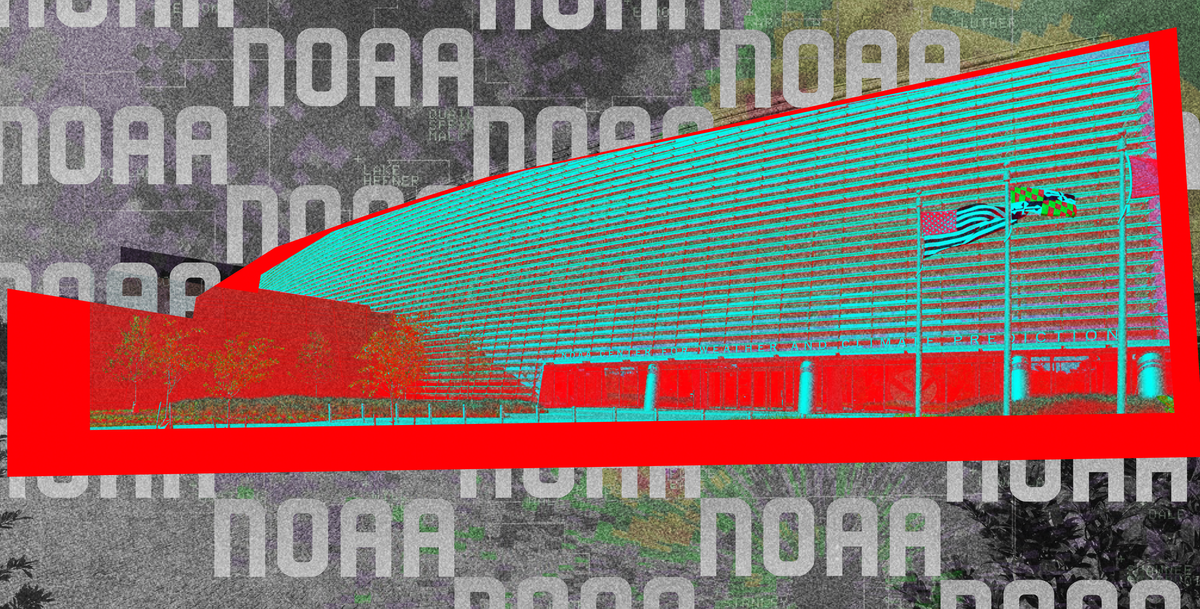Future of Forecasting Placed Within Cone of Uncertainty as Layoffs Hit NOAA

Following mass layoffs of hurricane researchers, meteorologists, and hundreds more employees at the National Oceanic and Atmospheric Administration, the stream of atmospheric data, vital to the safety of over 300 million Americans, has been disrupted.
Five Key Points:
- Weather models, radar, and other critical equipment are at risk of degrading
- Hurricane warnings and forecasts; including track and intensity, may become less accurate
- Data collection for models is now halted and slowed in some areas
- NOAA offices are already understaffed. Several weather stations, such as the National Weather Service offices in Alaska and Boston, were hit hard by layoffs
- Local meteorologists and weather apps can’t function without data from NOAA
Since President Donald Trump’s first day in office on Jan. 20, the Department of Government Efficiency (DOGE) fired thousands of federal workers across dozens of agencies to root out “fraud, waste, and abuse of taxpayer dollars.” This continued last Thursday afternoon when more than 800 NOAA employees were fired, according to U.S. Sen. Maria Cantwell (D-WA). Termination letters were sent out to NOAA probationary workers — employees who were hired within the past year — at around 3:30 p.m.
Weather Model Improvements Paused
“The layoffs are going to slow the progress that we made over the last 20 years,” Andrew Hazelton, former hurricane researcher at NOAA, said. “If you look at some of the long-term statistics, it’s really remarkable what we’ve done for hurricanes. The five-day track forecast now is about as accurate as the two-day forecast was 30 years ago, so there are better warnings, we have better lead time now, and people can get out earlier.”
Hazelton, who was laid off along with 12 colleagues last Thursday, started working at the Environmental Modeling Center last October. He was contracted with NOAA for about eight years, working with NOAA’s Geophysical Fluid Dynamic Laboratory and Hurricane Research Division in Miami. His most recent work involved developing and improving forecasting models like the Hurricane Analysis and Forecast Systems, HAFS, and new prototypes of the Global Forecast System.
“The HAFS model has shown promise in skill of rapid intensification, which is something that we’ve seen in the Gulf the last few years and it’s been traditionally hard to forecast,” Hazelton said. “But we’ve started to see some progress with that during Hurricane Helene and Milton where both were in the Gulf and rapidly intensified before they hit Florida and HAFS, in both cases, correctly predicted that the storm would rapidly intensify, which as a result the National Hurricane Center was able to predict the intensification and get better warnings out there.”
Hazelton said the layoffs will bring a setback to models like the HAFS. He said model improvements will now happen at a much slower rate.
“It’s going to handcuff our ability to lead scientifically and help people prepare,” Hazelton said.
The Fate of Hurricane Data is Up in the Air
Along with hurricane experts like Hazelton, some hurricane hunters were also laid off. Hazelton said staffing issues with the hunters could degrade the data they collect for satellites and weather models. This data is vital in determining the track and intensity of a tropical system.
“The Aircraft Operation Center at Lakeland, which is under the Office of Marine and Aviation line office, lost several probationary employees, including somebody that I worked closely with,” Hazelton said.
Hazelton worked with a flight director, who was stationed at the operation center. She was a meteorologist who was part of the official aircrew on planes that fly through tropical systems. Hazelton said the director’s job is to look at the radar and help the pilot navigate safely through a storm, while also making sure that the science and data collection goals of the mission are fulfilled.
“She was in the Navy and she was hit by these layoffs,” Hazelton said. “She had been there for over a year. I think her probation was two years for some reason and that’s something that I’ve seen with other agencies as well where veterans are getting sort of disproportionately hit by this,” Hazelton said.
Weather Offices are Understaffed and Overworked
Some of Hazelton’s colleagues at the modeling center who were also fired worked on severe weather modeling and computer architecture that helped models continue to improve. Hazelton said these layoffs will “hamstring the ability to model” and the employees at the center, who are already “understaffed,” will take up additional workload from the fired staff.
Along with losing staff from layoffs, the Jan. 28 “Fork in the Road” email sent by the Office of Personnel Management offered all federal employees a choice between continuing their current employment or voluntarily resigning under a deferred resignation program. Those who accepted the program — about 500 NOAA employees last Friday, according to a New York Times report — would be offered pay and benefits until Sept. 30.
“The weather services also historically had a lot of older folks in it because of just the way hiring happened. A lot of folks were hired in the early 1980s or in the 1990s and those people are now coming up to retire. A whole bunch of them took the ‘Fork in the Road’ resignation,” Tom Di Liberto, former public affairs specialist at NOAA who was also laid off last week, said. “So a combination of that, you’re basically asking less people to do the same amount of work, if not more work, and you’re asking for something to fail.”
Liberto said the NOAA offices in Alaska, which struggles to recruit workers, laid off about five people. Due to the lack of staffing, the National Weather Service office in Kotzebue, Alaska halted weather balloon launches indefinitely. The balloons gather important, upper-air data that is directly uploaded into the weather models.
“Less data going into the models is going to lead to there being worse models,” Liberto said.
Radar Outages Could Last Longer
With some technicians and facility directors laid off, this could potentially lead to longer wait times to get a radar running again if it goes down. This also creates an environment where crucial radar and weather model equipment may degrade more frequently.
“We hate uncertainty and what this has done is it just raised uncertainty to where we don’t know where things might break,” Liberto said. “Usually things don’t break during nice, sunny days. They usually break during severe weather and that’s the fear.”
Also, DOGE put a $1 spending limit on government-issued credit cards, which Liberto said could hinder the ability to purchase new equipment if a radar goes down.
Layoffs Putting 'Public Safety’ at Risk
Liberto said two people were laid off at the Boston NWS office where they were already short two people. Now, the office is running “four people low" and Liberto said that’s not a “conducive thing if you care about public safety.”
NOAA lost six public affairs specialists, including Liberto, with two of his colleagues taking the deferment program and one retiring. Also, the entire NOAA External Affairs team was fired.
“They’re the ones who work with the U.S. Chamber of Commerce and they work with the private weather industry and try to make sure they use NOAA data for the best purposes,” Liberto said about NOAA External Affairs. “A very important role is now gone.”
Some of the employees who were fired were contractors for around 10 years, such as Hazelton, and became an expert in their field. However, some of them recently signed on as a federal employee. Therefore, they were still fired due to their probationary status.
“So now it’s people who don’t have that same experience having to take on the same responsibility,” Liberto said.
Your Weather App Needs NOAA
Some supporters of these cuts say they will now rely on their weather apps or their local meteorologist to provide them with day-to-day forecasts. However, Liberto said the private weather industry can’t exist without NOAA. He said weather apps, meteorologists, and every weather service in the private sector use models produced by NOAA to make their forecasts.
“They’re using observational data from NOAA to report on things, they’re using NOAA radars to tell you when storms are coming, they’re relying on NOAA watches and warnings when there is a storm incoming or severe weather or any winter weather,” Liberto said.
Liberto said if the data from NOAA goes down, weather forecasting across the entire private sector will get worse. He said private weather companies can make datasets that are tailored for everyday people, but they can’t run the same expensive equipment that NOAA uses. NOAA currently has 160 radars and eight satellites.
“It’s like having a building and then removing the first 10 floors and expecting the building to stand,” Liberto said about private weather services forecasting without NOAA.
Liberto said it wouldn’t be beneficial to have private companies issue watches and warnings, as they might require subscription-based alerts. He said a life-or-death warning placed behind a paywall would be a “horrible idea.”
What’s Next
Hazelton and Liberto said they are looking into submitting a class action lawsuit against these firings because they both believe it was illegal. Hazelton said the mass layoffs were not part of the “reduction in force” process, which has specific guidelines on how to legally layoff parts of a workforce. Hazelton believes those set of procedures were not followed.
“I want people to understand that at NOAA, we’re not political,” Hazelton said. “We’re just trying to get good, accurate weather information out there to the public and help people prepare when there’s a dangerous situation, or even just day-to-day weather forecasts and be able to go about their day safely. I just hope people realize the value of our data and what we do regardless of where you fall on the political spectrum.”
Liberto wants the public to know that the laid off workers from NOAA are "nerds," who just want to make sure everyone is safe.
“NOAA’s mission is to help the American people and I just wish people recognize that these federal workers are incredibly hardworking, passionate people," Liberto said.





